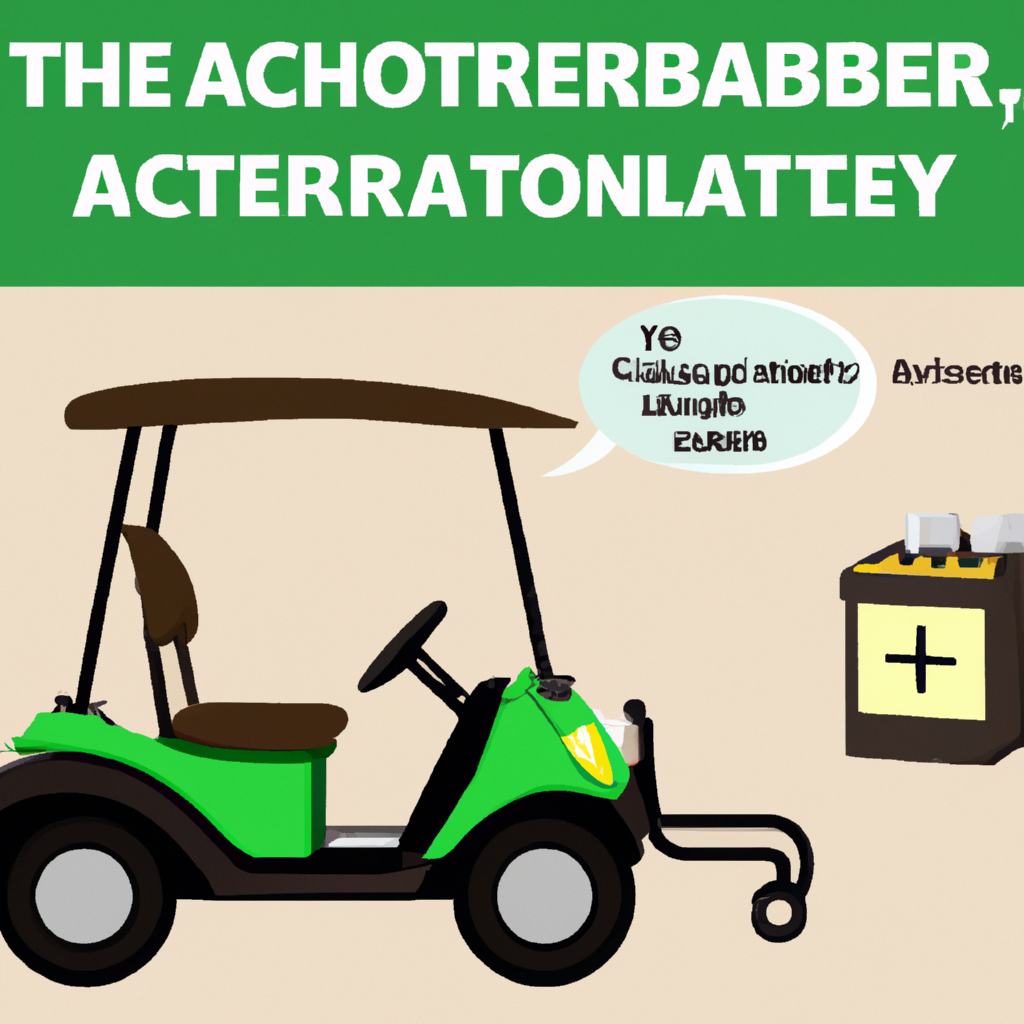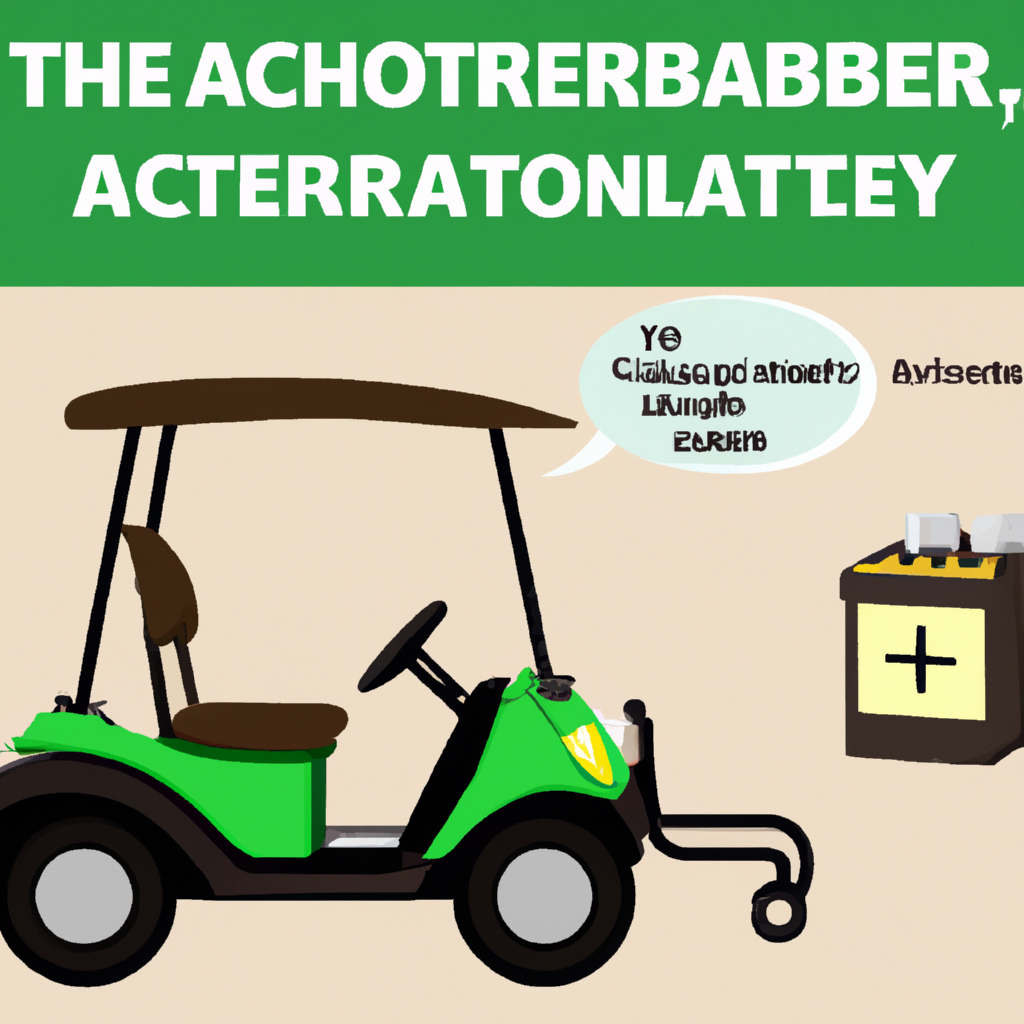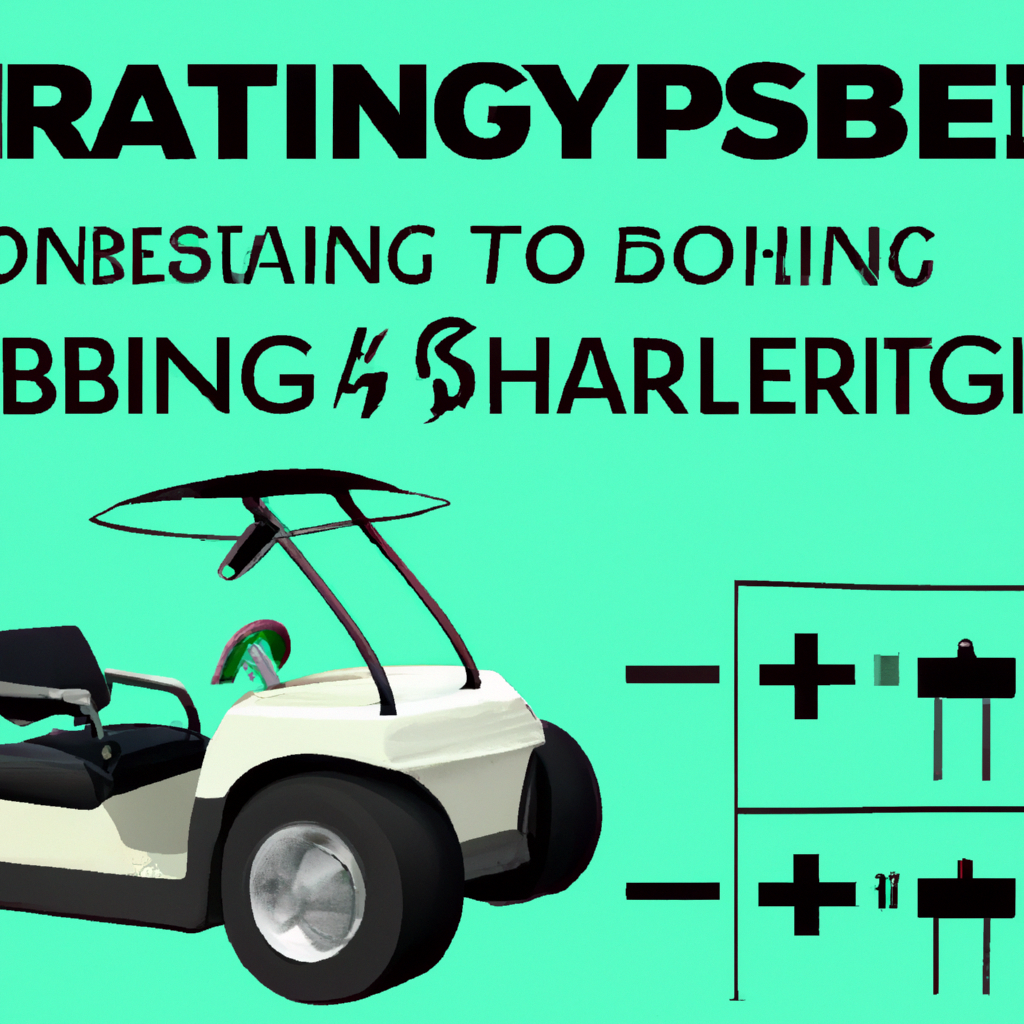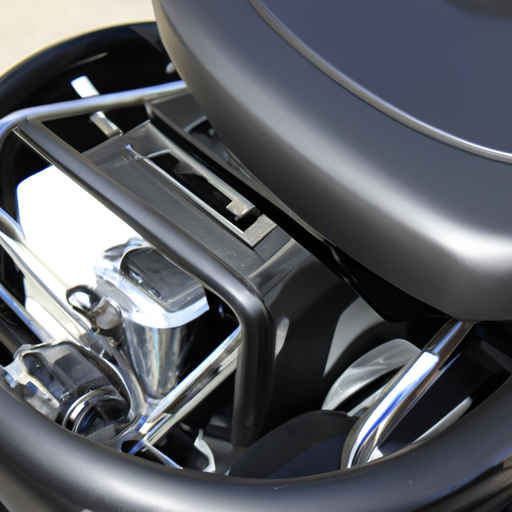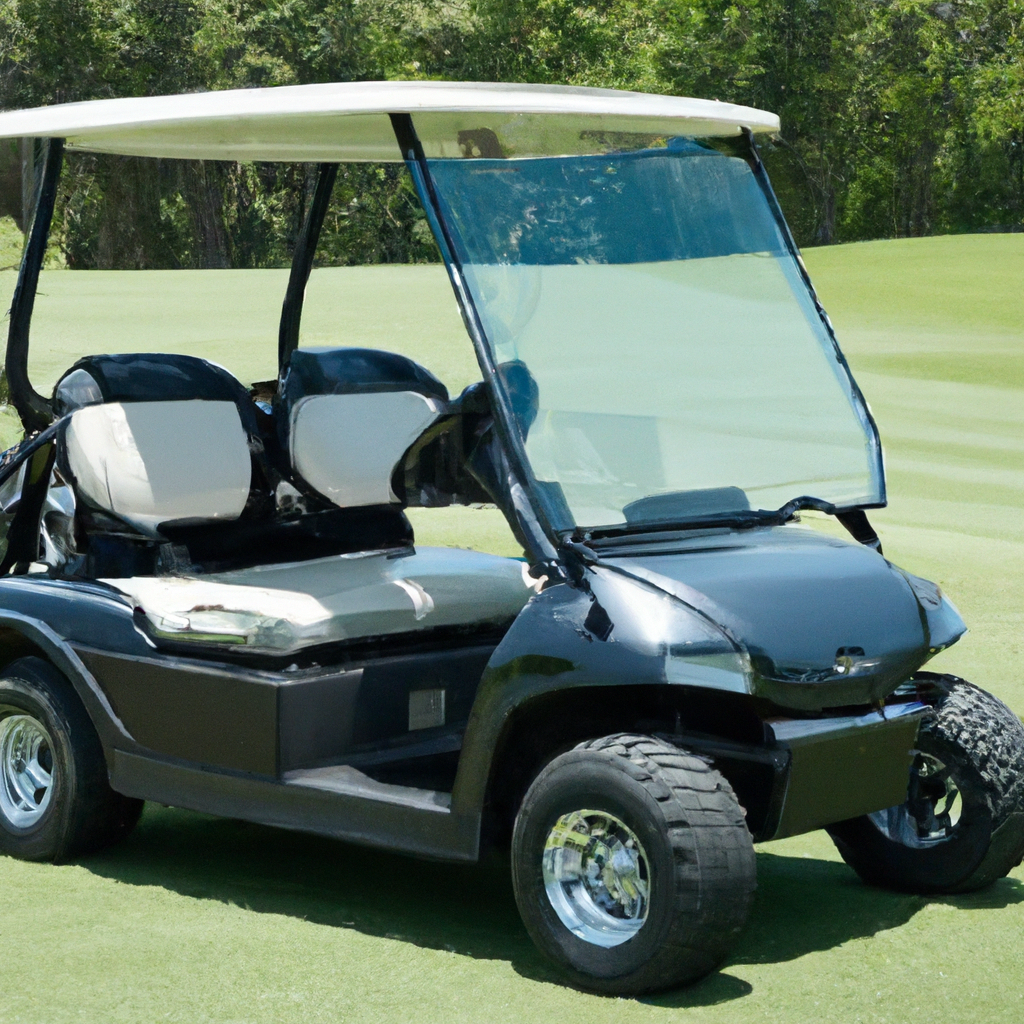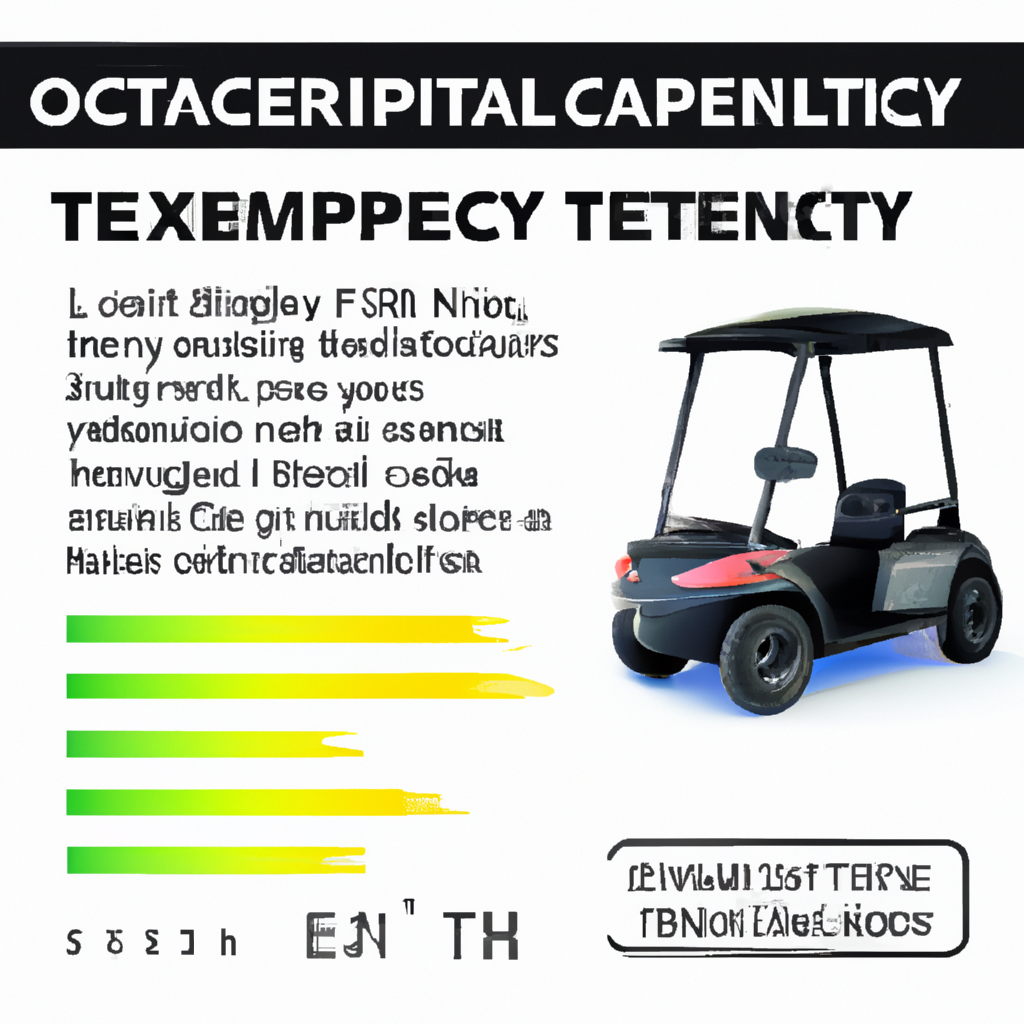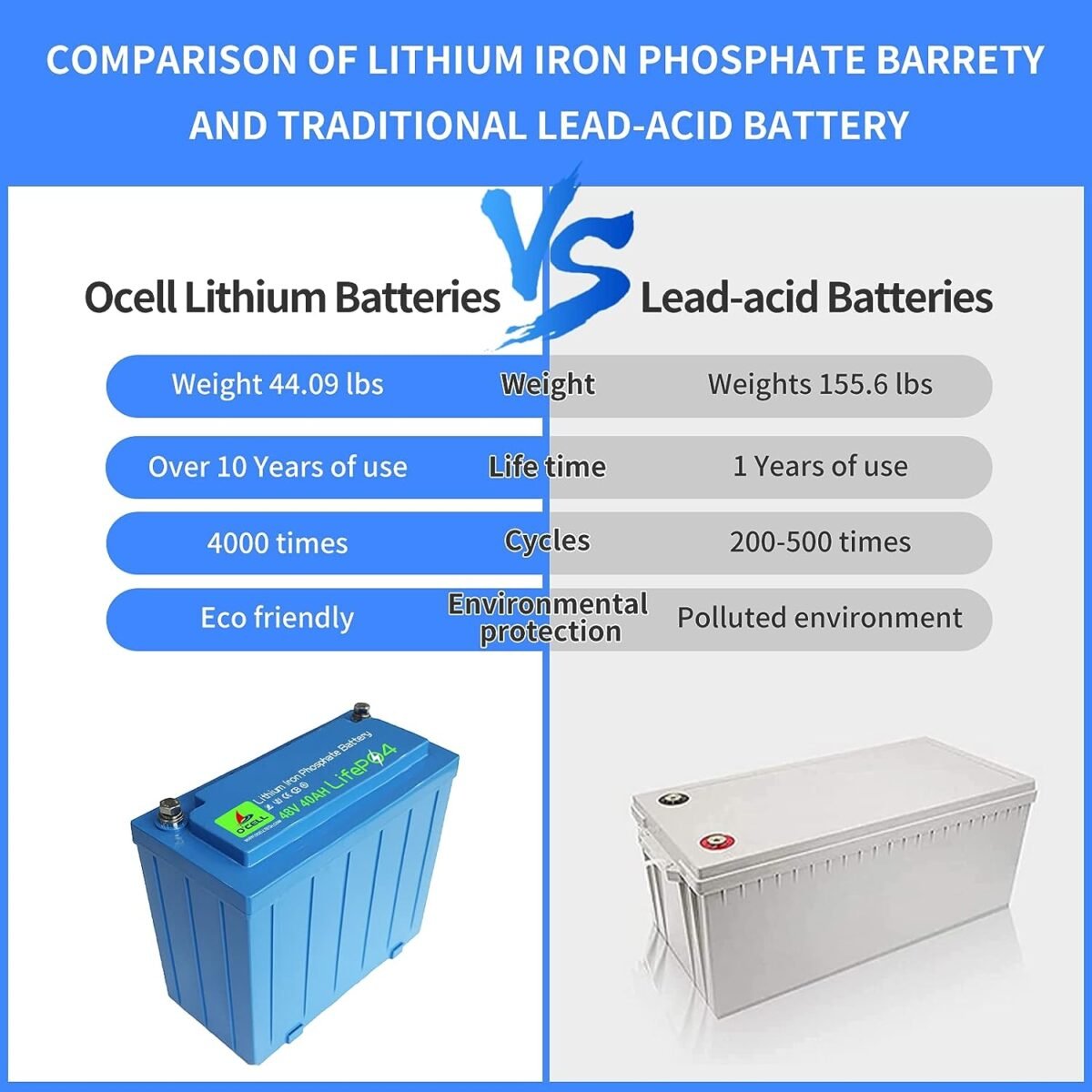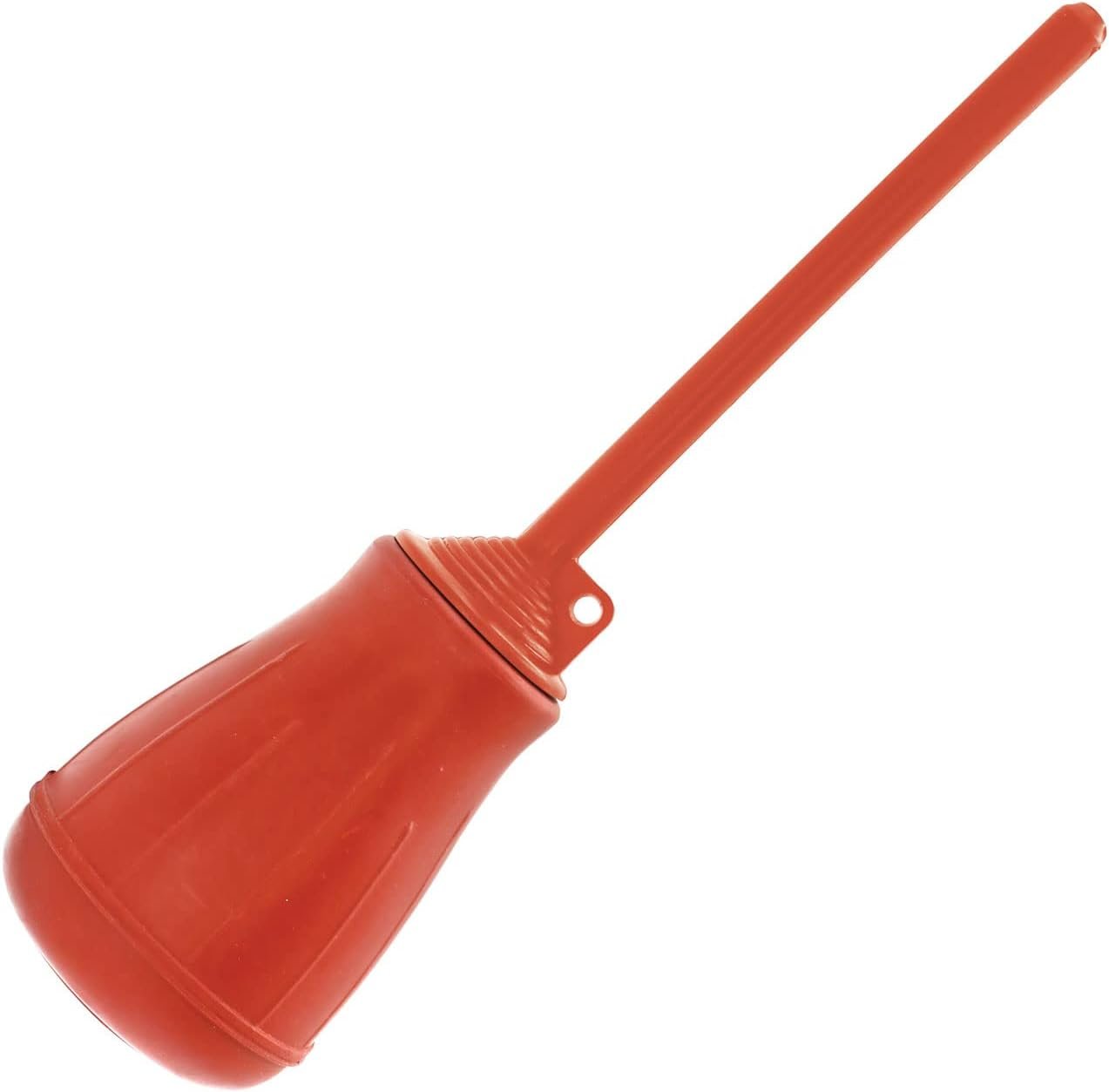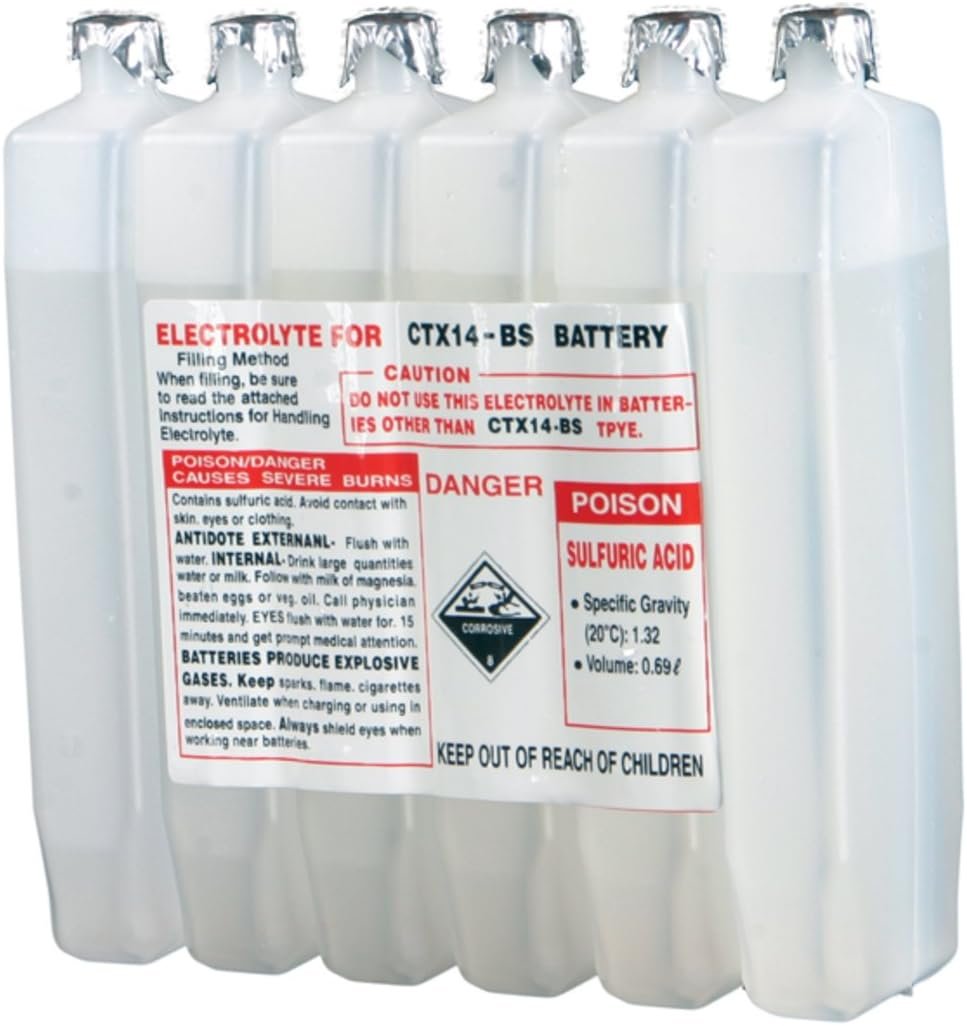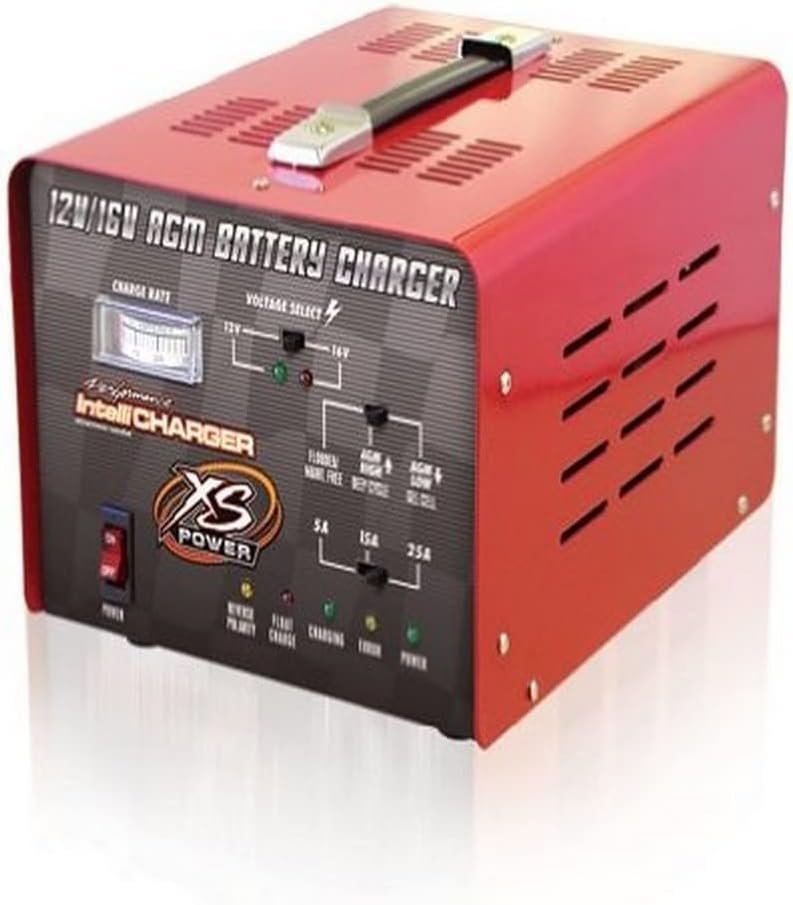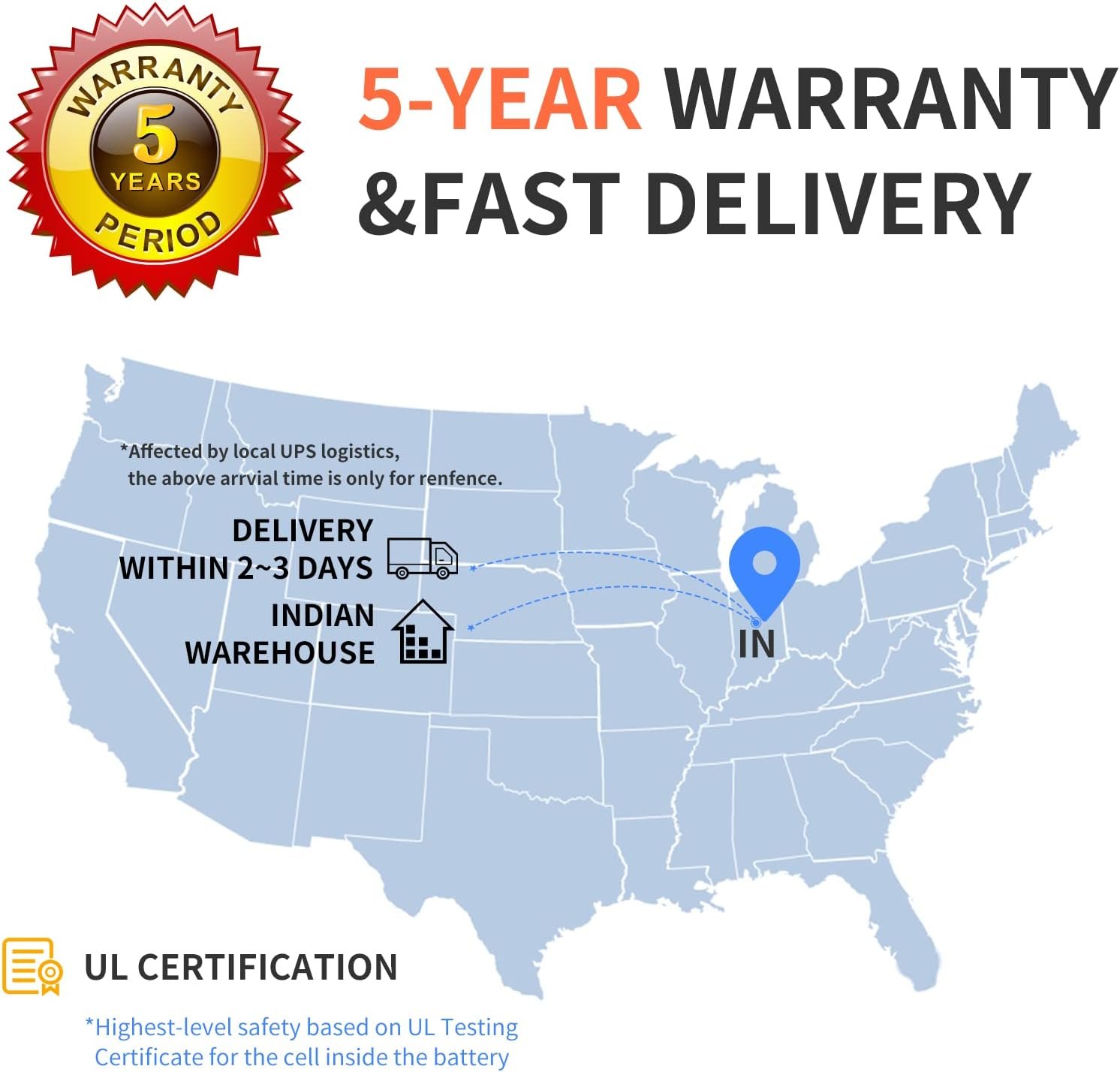If you’re in the market for a new golf cart battery, you’ve come to the right place. In this article, we’ll be exploring the top options available to help you make an informed decision. From long-lasting power to reliable performance, we’ll dive into the features and benefits of various golf cart batteries. Whether you’re a casual golfer or a seasoned pro, finding the best battery for your golf cart is essential to ensure a seamless and enjoyable round on the course. So let’s get started and discover the top golf cart battery options that will power your game to new heights.

1. Introduction
– Explanation of the importance of a reliable golf cart battery
Having a reliable golf cart battery is essential for any golfer or golf course owner. The battery is the power source that keeps your golf cart running smoothly, allowing you to traverse the course with ease. Without a dependable battery, you may find yourself stranded on the course or unable to complete a round. Therefore, it is crucial to understand the different types of golf cart batteries available and the factors to consider when choosing one. In this article, we will explore the top golf cart battery options, including lead-acid batteries, lithium-ion batteries, AGM (Absorbent Glass Mat) batteries, and gel batteries. We will also compare the top brands in each category and provide tips for maintaining and extending the lifespan of your golf cart battery.
2. Types of Golf Cart Batteries
– Lead-acid Batteries
– Lithium-ion Batteries
– AGM (Absorbent Glass Mat) Batteries
– Gel Batteries
When it comes to golf cart batteries, there are several types to choose from. The most common types include lead-acid batteries, lithium-ion batteries, AGM batteries, and gel batteries. Each type has its own set of advantages and disadvantages, so it is important to understand their characteristics before making a decision.
Lead-acid batteries are the most traditional type of golf cart battery. They are affordable and widely available, making them a popular choice. These batteries use a chemical reaction between lead plates and sulfuric acid to produce electricity. While they are reliable and relatively robust, they require regular maintenance and may have a shorter lifespan compared to other types of batteries.
Lithium-ion batteries are a newer and more advanced option for golf carts. They are lightweight and have a long lifespan, making them an attractive choice for many golfers. Lithium-ion batteries also provide consistent power output, allowing for better performance on the golf course. However, they tend to be more expensive than other battery options.
AGM batteries, also known as Absorbent Glass Mat batteries, are a type of lead-acid battery. They contain a fiberglass mat that holds the electrolyte solution, providing better cycling abilities and preventing acid spills. AGM batteries are maintenance-free and can withstand deep discharge cycles, making them suitable for heavy-duty use. However, they are generally more expensive than traditional lead-acid batteries.
Gel batteries are another type of lead-acid battery that uses a gel electrolyte instead of a liquid electrolyte. This makes them spill-proof and more resistant to vibration and shock. Gel batteries also have a longer lifespan and can perform well in a wide range of temperatures. However, they are more expensive than standard lead-acid batteries.
3. Factors to Consider when Choosing a Golf Cart Battery
– Battery Capacity
– Battery Voltage
– Battery Weight
– Battery Lifespan
When selecting a golf cart battery, there are several factors you should consider to ensure you choose the right one for your needs.
Battery capacity refers to the amount of charge a battery can hold. The higher the capacity, the longer the battery will last before needing to be recharged. Consider the distance you typically travel on the golf course and choose a battery with sufficient capacity to meet your needs.
Battery voltage is another important factor to consider. Golf carts typically operate on either 36 volts or 48 volts systems. Ensure the battery you choose matches the voltage requirements of your golf cart to ensure compatibility and optimal performance.
Battery weight is an essential consideration, especially if you frequently transport your golf cart or have weight restrictions. Lighter batteries are easier to handle and can improve the overall performance of your golf cart. However, lighter batteries may have a lower capacity and shorter lifespan compared to heavier ones.
Battery lifespan refers to the number of charge and discharge cycles a battery can endure before it starts to lose its capacity and efficiency. It is important to choose a battery with a long lifespan to minimize the need for frequent replacements. Consider the manufacturer’s warranty and customer reviews to gauge the battery’s expected lifespan.

4. Lead-acid Batteries
– Overview of lead-acid batteries
– Pros and cons of using lead-acid batteries
– Popular lead-acid battery brands
Lead-acid batteries have been widely used in golf carts for many years due to their durability and affordability. These batteries work by converting chemical energy into electrical energy through a reversible chemical reaction between lead plates and sulfuric acid.
One of the main advantages of lead-acid batteries is their affordability. They are relatively inexpensive compared to other battery types, making them accessible to a wide range of golfers. Lead-acid batteries are also readily available, and their familiarity makes them a popular choice for many golf cart owners.
However, lead-acid batteries do have some drawbacks. They require regular maintenance, including adding distilled water to replenish the electrolyte levels. Failure to properly maintain lead-acid batteries can lead to decreased performance and a shorter lifespan. Additionally, lead-acid batteries can be heavy, which can impact the overall performance and driving range of your golf cart.
Some popular lead-acid battery brands include Trojan, Interstate, and Duracell. These brands have established a reputation for producing reliable and high-quality batteries that are widely used in the golf cart industry.
5. Lithium-ion Batteries
– Overview of lithium-ion batteries
– Pros and cons of using lithium-ion batteries
– Popular lithium-ion battery brands
Lithium-ion batteries are becoming increasingly popular in the golf cart industry due to their advanced technology and superior performance. These batteries use lithium-ion cells to store and deliver electrical energy.
One of the main advantages of lithium-ion batteries is their high energy density, which means they can store more energy in a smaller and lighter package compared to other battery types. This makes them ideal for golf carts where weight and space are considerations. Lithium-ion batteries also have a longer lifespan and can withstand a higher number of charge and discharge cycles compared to lead-acid batteries.
However, lithium-ion batteries do come with a higher price tag. They tend to be more expensive upfront, but their longer lifespan and superior performance can offset the initial cost. It is also important to note that lithium-ion batteries require specific charging systems to ensure their longevity and safety.
Popular lithium-ion battery brands in the golf cart industry include Battle Born, RELiON, and Power Sonic. These brands have gained a reputation for producing high-quality and reliable batteries that offer excellent performance on the golf course.
6. AGM (Absorbent Glass Mat) Batteries
– Overview of AGM batteries
– Pros and cons of using AGM batteries
– Popular AGM battery brands
AGM batteries, also known as Absorbent Glass Mat batteries, are a type of lead-acid battery that offers some distinct advantages over traditional flooded lead-acid batteries. AGM batteries use a fiberglass mat to hold the electrolyte solution, which prevents acid spills and provides enhanced cycling abilities.
One of the main advantages of AGM batteries is their maintenance-free nature. Unlike flooded lead-acid batteries, AGM batteries do not require the addition of distilled water to maintain the electrolyte levels. This makes them more convenient and user-friendly, particularly for golfers who prefer a hassle-free battery option.
AGM batteries are also known for their ability to withstand deep discharge cycles without suffering significant damage. This makes them suitable for heavy-duty use, ensuring consistent performance on the golf course. However, AGM batteries are generally more expensive than traditional lead-acid batteries, which may be a consideration for some golf cart owners.
Popular AGM battery brands in the golf cart industry include Optima, VMAXTANKS, and Renogy. These brands have established a reputation for producing reliable and top-performing AGM batteries that are highly regarded by golfers.
7. Gel Batteries
– Overview of gel batteries
– Pros and cons of using gel batteries
– Popular gel battery brands
Gel batteries are another type of lead-acid battery that offers unique advantages for golf cart applications. Gel batteries use a gel electrolyte, which is a thick gel-like substance that immobilizes the electrolyte and makes the battery spill-proof.
One of the main advantages of gel batteries is their resistance to vibration and shock. This makes them ideal for golf cart use, as the batteries are subjected to rough terrain and uneven surfaces. Gel batteries also have a longer lifespan compared to traditional lead-acid batteries, which can save golf cart owners on frequent replacements.
However, gel batteries tend to be more expensive compared to other lead-acid battery options. Additionally, they may have a slightly lower capacity compared to flooded lead-acid batteries, which can impact the driving range of your golf cart. It is also important to note that gel batteries require specific charging systems to prevent overcharging, as this can damage the battery.
Popular gel battery brands in the golf cart industry include Universal Power Group, Mighty Max Battery, and MK Battery. These brands are well-known for their high-quality and reliable gel batteries that deliver consistent performance on the golf course.
8. Comparison of Top Golf Cart Battery Brands
– Comparison of battery capacity and voltage
– Comparison of battery weight and lifespan
– Price comparison
– Customer reviews
To help you make an informed decision, let’s compare the top battery brands across different categories.
When comparing battery capacity and voltage, it is essential to match the battery’s specifications with your golf cart’s requirements. Opt for a battery with sufficient capacity and voltage to meet your golfing needs. Consider factors such as the driving range and the weight of any additional accessories or passengers you may have on your cart.
Battery weight and lifespan are also crucial factors to consider. While lighter batteries may offer better maneuverability, they may have a lower capacity and shorter lifespan. Consider your transportation needs and weight restrictions when selecting a battery. Additionally, choose a battery with an extended lifespan to reduce the frequency of replacements and save on costs in the long run.
Price is always a consideration when purchasing a golf cart battery. While lithium-ion batteries tend to be more expensive upfront, they often offer a longer lifespan and superior performance. On the other hand, lead-acid batteries are generally more affordable but may require regular maintenance and replacements.
Lastly, customer reviews can provide valuable insights into the performance and reliability of golf cart batteries. Consider the experiences of other golfers and prioritize brands with positive reviews and ratings.
9. Tips for Maintaining and Extending the Lifespan of Golf Cart Batteries
– Proper charging and maintenance routine
– Regular cleaning and inspection
– Avoiding extreme temperatures
– Replacing batteries when necessary
To ensure the longevity and optimal performance of your golf cart battery, here are some maintenance tips to follow:
Establish a proper charging and maintenance routine for your battery. Follow the manufacturer’s guidelines on charging times and ensure you use a compatible charger. Avoid overcharging, as this can damage the battery’s cells and lead to a shorter lifespan. Additionally, periodically check the battery’s electrolyte levels (if applicable) and add distilled water as necessary.
Regularly clean and inspect your battery to remove any dirt or corrosion. Use a soft brush and a baking soda-water mixture to clean the battery terminals and cables. Inspect the battery for any signs of damage or leakage, and address any issues promptly to prevent further damage.
Extreme temperatures can negatively affect battery performance and lifespan. Avoid exposing your golf cart battery to extreme heat or cold, as this can lead to decreased capacity and efficiency. Store your battery in a cool and dry place when it is not in use, and avoid leaving it in direct sunlight for an extended period.
Lastly, it is important to replace your batteries when necessary. As batteries age, their capacity and performance gradually decline. If you notice a significant decrease in driving range or difficulty starting your golf cart, it may be time to replace the battery. Consult the manufacturer’s recommendations or seek professional advice to determine the appropriate time for battery replacement.
10. Conclusion
– Summary of the best golf cart battery options
– Final thoughts on choosing the right battery
In conclusion, choosing the right golf cart battery is crucial for a reliable and enjoyable golfing experience. Lead-acid batteries, such as Trojan and Interstate, offer affordability and durability but require regular maintenance. Lithium-ion batteries, such as Battle Born and RELiON, provide superior performance and a longer lifespan but come with a higher price tag. AGM batteries, including Optima and VMAXTANKS, offer maintenance-free convenience and deep discharge capabilities. Gel batteries, such as Universal Power Group and Mighty Max Battery, are spill-proof and resistant to vibration and shock.
When selecting a battery, consider factors such as capacity, voltage, weight, and lifespan to ensure compatibility with your golf cart and specific needs. Compare prices and read customer reviews to gauge the performance and reliability of different battery brands.
By following proper charging and maintenance routines, regularly inspecting and cleaning your battery, avoiding extreme temperatures, and replacing batteries when necessary, you can extend the lifespan and optimize the performance of your golf cart battery.
In summary, choosing the best golf cart battery is a personal decision that depends on your specific requirements and preferences. Consider the different types of batteries available, weigh their pros and cons, and choose a reputable brand that offers the right balance of performance, longevity, and affordability. With a reliable and well-maintained golf cart battery, you can confidently navigate the golf course and enjoy uninterrupted rounds of golf.

